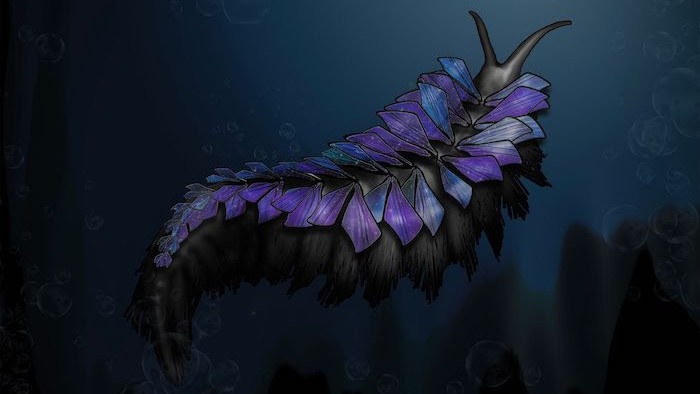500 million-year-old worm with 'shuriken' spikes named after gigantic 'Dune' sandworms
The newly discovered species was part of the phylum annelid, which is made up of segmented worms.
A newfound, 500-million-year-old fossilized sea worm has been unearthed in northern Utah. This ancient worm would have glided through the ocean during the Cambrian period (541 million to 485.4 million years ago), which was marked by a surge of new life on Earth sometimes dubbed the "Cambrian explosion."
The new species is named Shaihuludia shurikeni. Its genus is inspired by the fictional "Shai-Hulud" worms on the spiceworld Arrakis in the "Dune" novels.
"I'm a big ol' nerd and at the time I was getting really excited for the 'Dune' movies," Rhiannon LaVine, the researcher who made the discovery, said in a statement.
The species name references the Japanese word for throwing star — "shuriken" — because of the fossil's blade-like bristles, which are known as chaetae and are common in annelids, a phylum of segmented worms.
Related: Why do cambrian creatures look so weird?
Researchers found the fossil while excavating a site at Spence Shale, a thick geological formation along the border between northern Utah and southern Idaho. The specimen was about 7 to 8 centimeters (70 to 80 millimeters) long, or "a little shorter than the length of a smartphone," LaVine said. (In contrast, the fictional sandworms of "Dune" measure many hundreds of feet long).
"I split open one of these pieces of rock and instantly knew it was something that wasn't typical," LaVine, a research associate with the University of Kansas Biodiversity Institute and Natural History Museum, said in the statement. "The first thing we see are these radial blades that look like stars or flowers," she said. Initially, the researchers were uncertain whether the flower-like design actually came from a living creature or if it was just a "weird mineral growth," she added.
Get the world’s most fascinating discoveries delivered straight to your inbox.
To figure this out, a team of researchers, including LaVine, analyzed the fossil with a scanning electron microscope, which involved blasting the specimen with a beam of electrons to provide a detailed close-up image of its surface. They determined that the specimen was a new species of annelid, according to a study published April 8 in the journal Historical Biology.
"Annelids are very rare in the Cambrian of North America, and so far we only knew of a single specimen from the Spence Shale," study lead author Julien Kimmig, a paleontologist with the State Museum of Natural History in Germany, said in the statement.
This isn't the first time scientists have discovered rare fossils hidden within the Spence Shale: roughly 90 species of Cambrian trilobites and soft-bodied fossils have been found in this sediment since the 1900s, including an ancient bottom-feeder shaped like a wine glass that was found in 2017.
"This discovery gets us to think about deep time," LaVine said. "It's very cool to think about our planet as a record of history and all of the different environments that have happened over billions of years, all on the same ground we stand on. We've had alien worlds beneath our feet."

Kiley Price is a former Live Science staff writer based in New York City. Her work has appeared in National Geographic, Slate, Mongabay and more. She holds a bachelor's degree from Wake Forest University, where she studied biology and journalism, and has a master's degree from New York University's Science, Health and Environmental Reporting Program.

